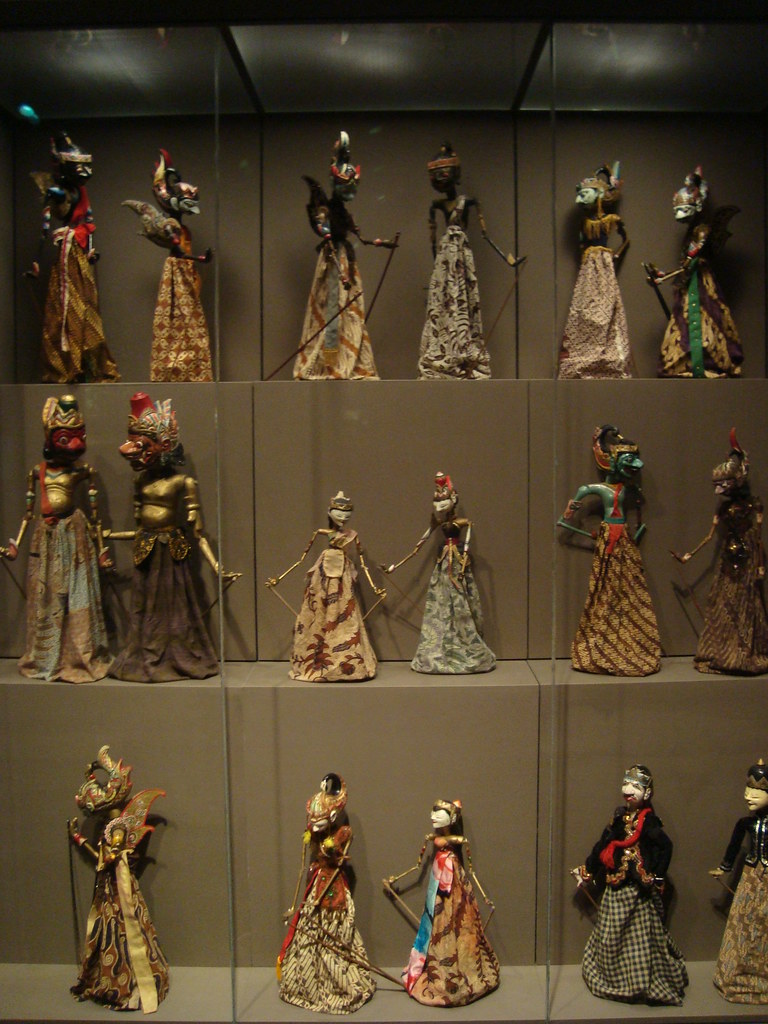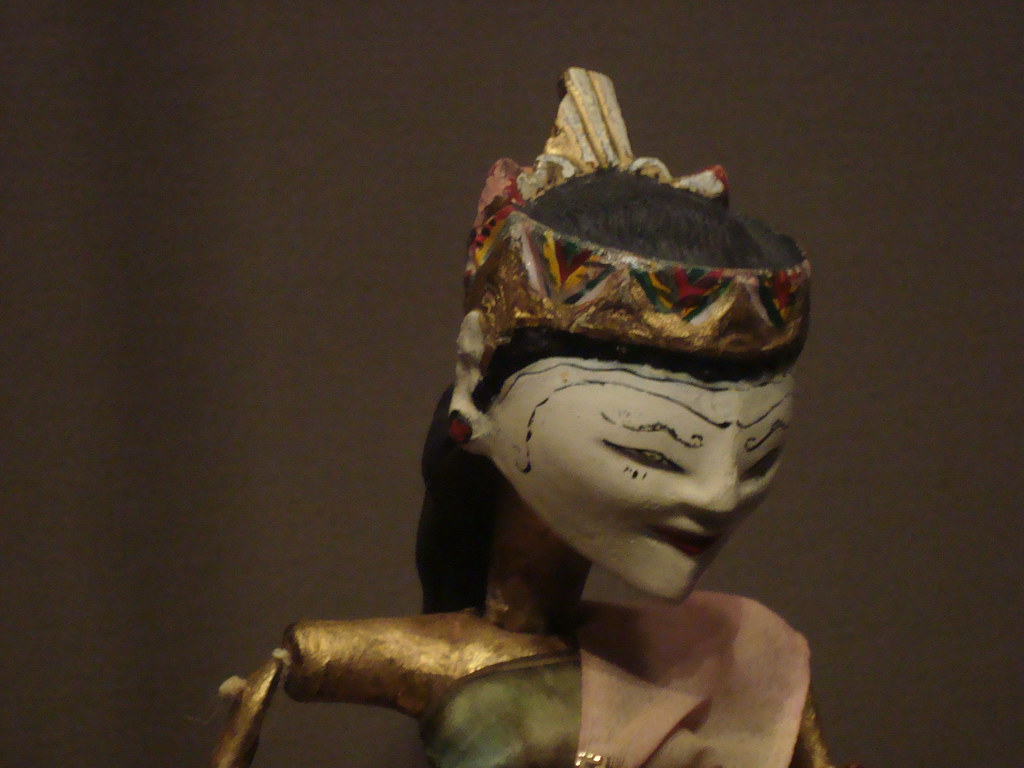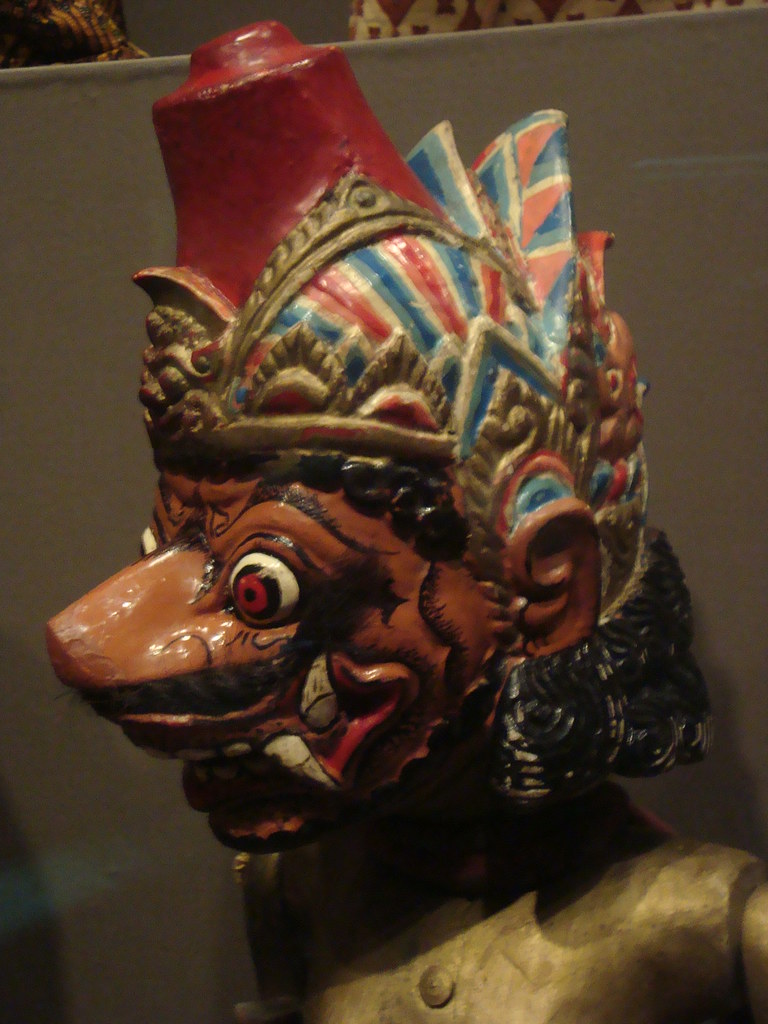
In the distinctive Indonesian puppetry traditions, we find the three-dimensional puppet form of Wayang Golek. It was performed in Java for all audiences, not only the aristocratic class.
Although children are often fascinated by the art, it is a thoroughly adult form of entertainment, drawn from Hindu and Islamic tales including the Mahabharata.
The puppets are made of wood, with the facial features, colors and costumes defining which characters they represent. The heads can turned by the puppeteer, with the rods attached to hinged arms that move at the shoulders, elbows and wrists. This allows a significant degree of versatility in expression. The costumes are made from leather, sequins, beads, batik and other fabrics.
The audiences are familiar with the characters and all of their personalities, powers and weaknesses to such a degree that one can often make pop culture allusions to them in Indonesia and be understood.
This is a demanding tradition- it's a solo show as the puppeteer handles all of the characters and speaks for all of them, making sound effects and directing a live musical ensemble. A puppeteer can have between 50 to 90 puppets. The larger collections are found in West Java where the Hindu epics tend to be the most popular and require more individualized characters. In northern coast of Java, the collections tend to be smaller, and many puppets act as more than one character.
A show lasts many hours and can't be interrupted, or else tradition suggests it will cause disruption in the everyday world it is paralleling. These shows depict war and comedies, confront social problems of poverty and relationships between the state and the people, and a master of the art is considered to have significant spiritual power.
The puppets basically break down into those with refined or crude personalities.


Refined nobles are given slow, smooth gestures and the voices are soft and elegant. Cruder characters are given wide gestures and grating, harsh voices.
When a puppet is not being used in a performance it is lined on the side of the stage. Those on the right side of the stage are heroes, those on the left, the villains.
No comments:
Post a Comment